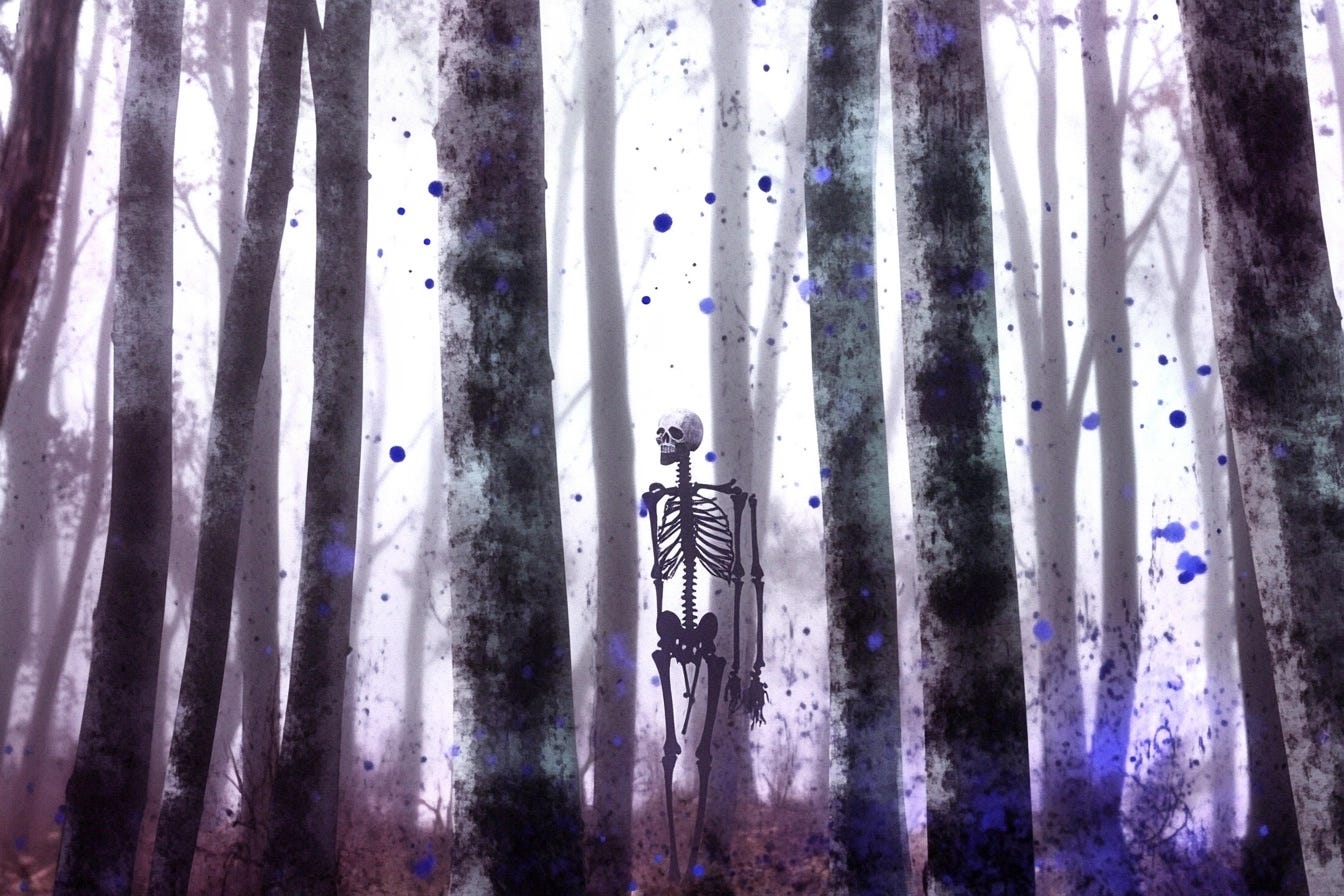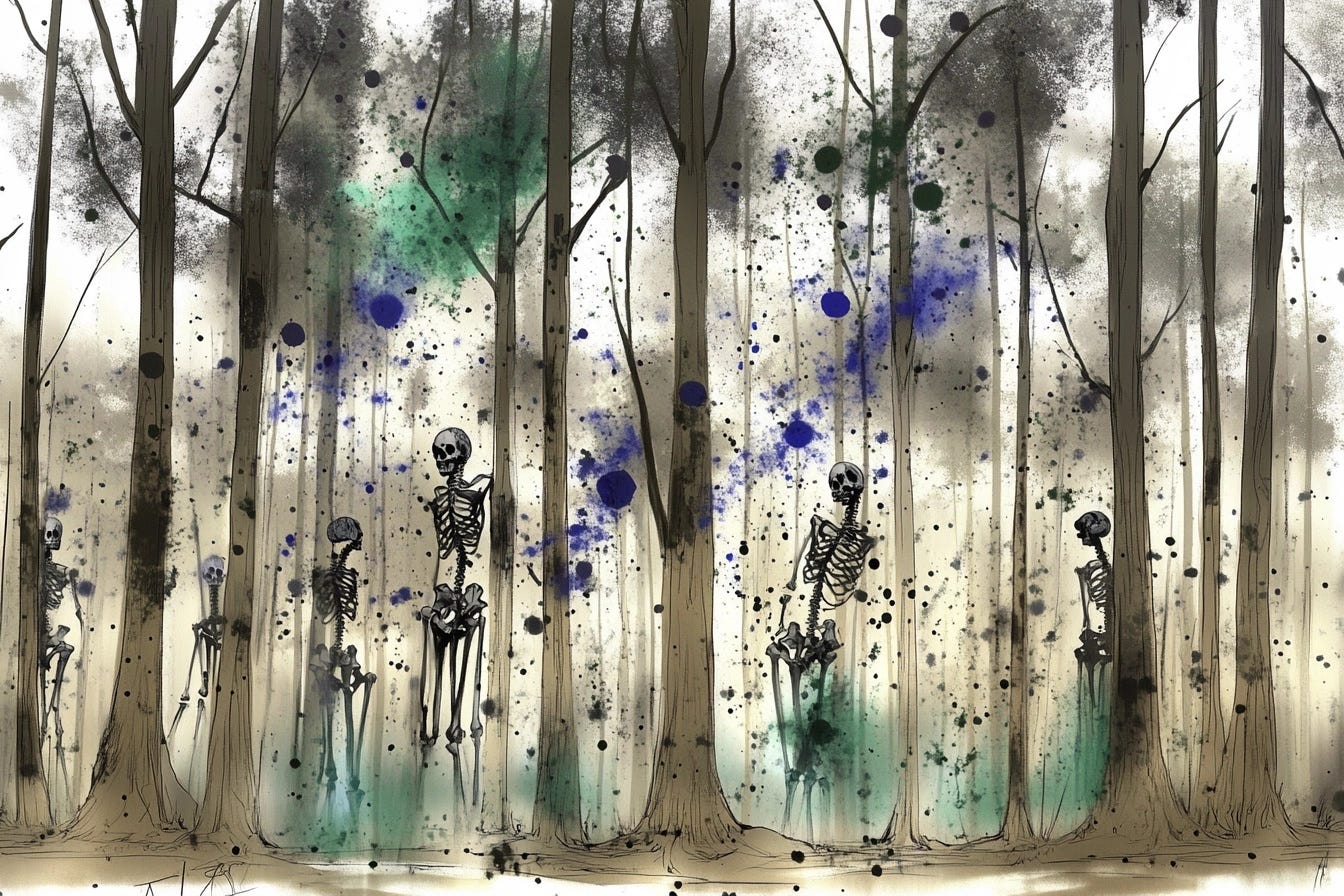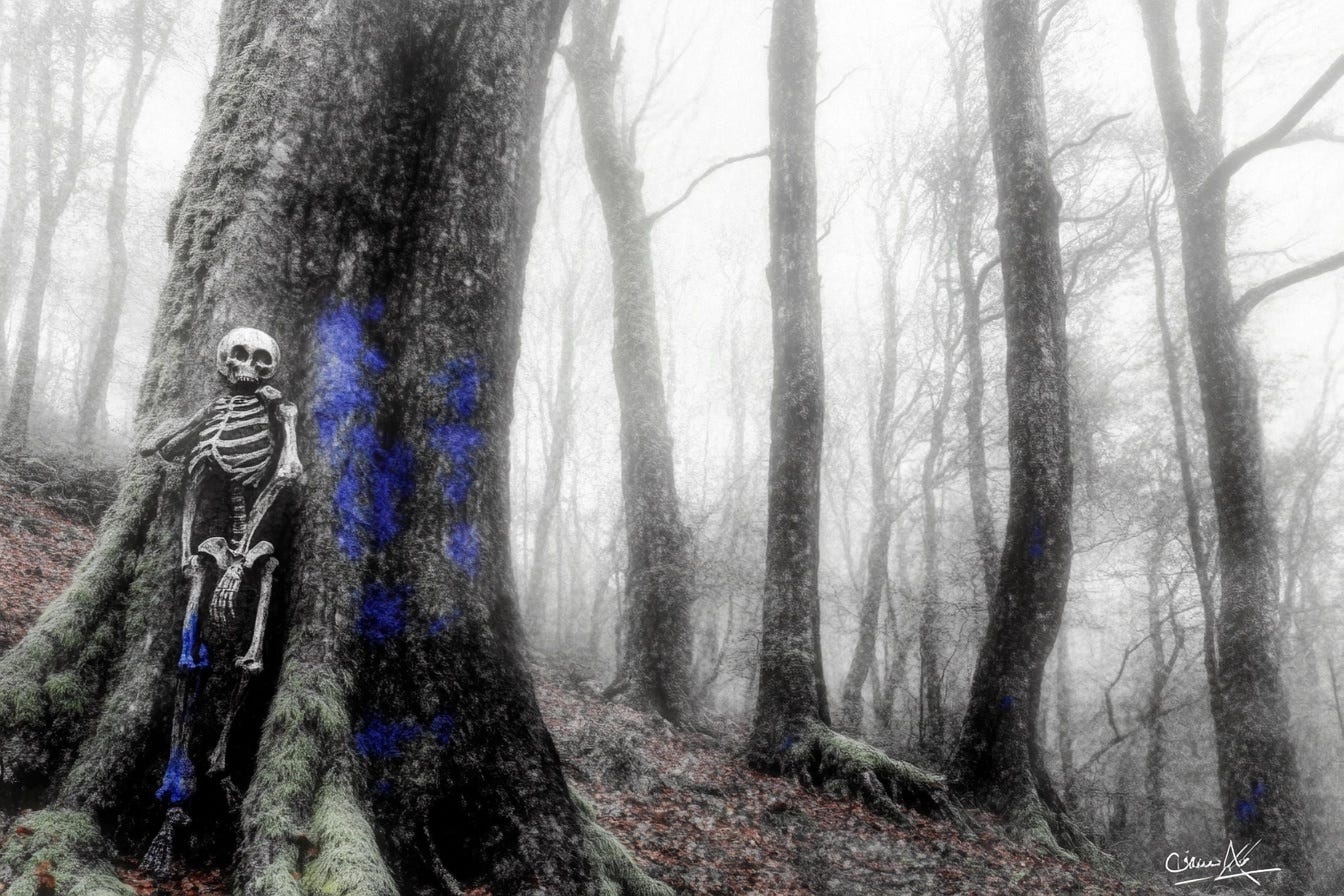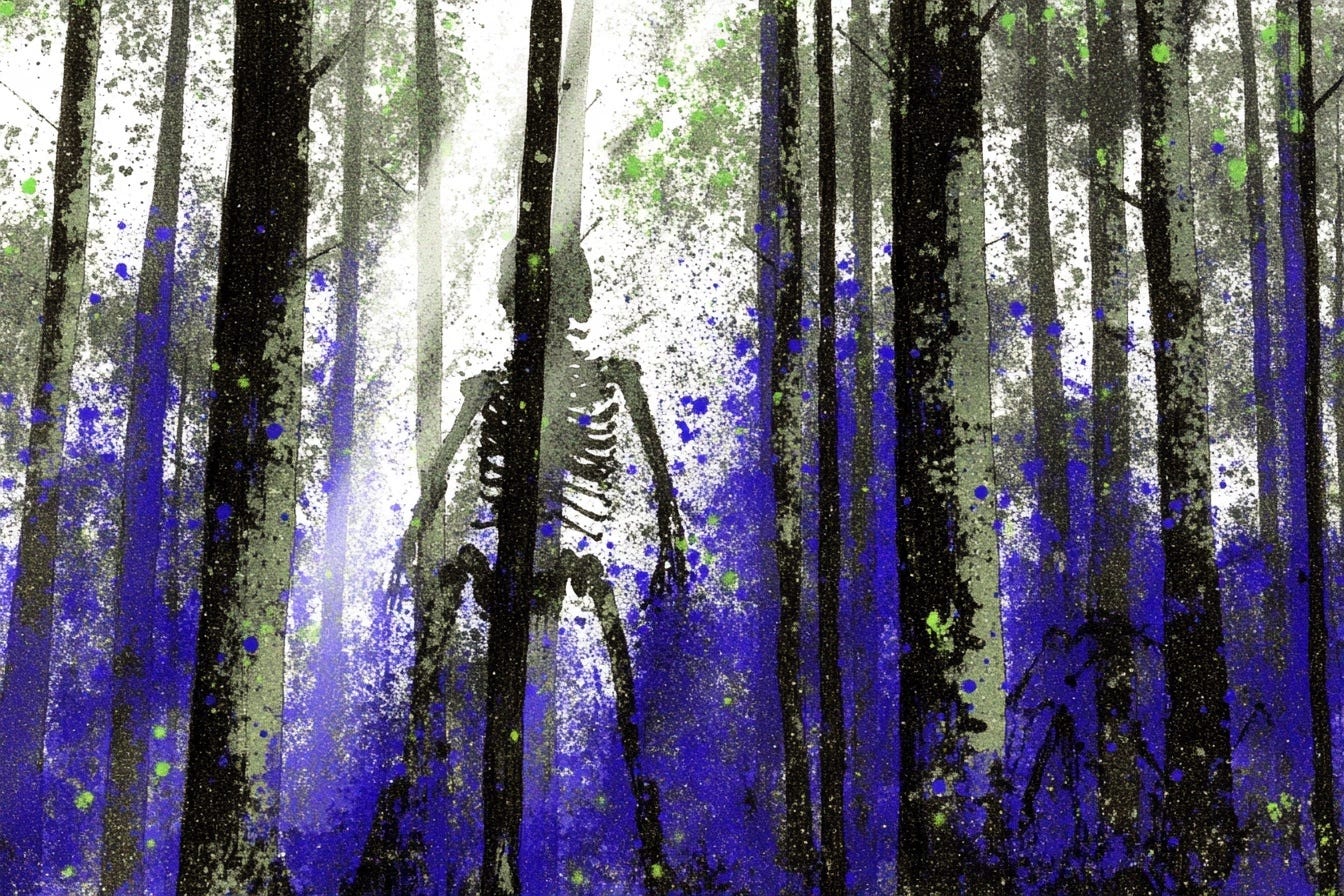Echoes Beyond the Veil: Spirit Communication, Discernment, and the Ecology of the Unseen
A journey through the dangers, wisdom, and mysteries of Instrumental TransCommunication—bridging ancient traditions with modern spirit contact.
by Matthew D. Jackson | Obscura Vox ITC
Introduction
What happens when you reach beyond the veil, seeking voices from the unseen? Instrumental TransCommunication (ITC)—capturing spirit voices through static and devices—offers a modern bridge to an ancient human impulse: connecting with the divine, the departed, or the unknown through timeless practices like prayer, meditation, and psychedelics. This exploration of ITC’s dangers, wisdom, and mysteries blends personal encounters with cultural traditions, revealing a timeless truth: the spirit realm answers, but not always as expected. With clarity as our guide, we’ll explore why we risk this dance, how cultures navigate its perils, and what it means to listen responsibly to echoes beyond the veil.
A Call to the Unseen: Risks, Drive, and Discernment
When you call out to the darkness, what happens if the darkness answers? Not a faint crackle or ghostly murmur, but a presence—sharp, ancient, aware. Instrumental TransCommunication (ITC) uses devices to capture these voices—Electronic Voice Phenomena (EVPs)—from the spirit realm, a domain of spirits, entities, or forces we call the Other. ITC isn’t about proving the paranormal; it’s a conversation, a gamble where your energy meets this Other, and you’re both seeker and sought.
Humankind yearns to touch the invisible, to transcend the physical—a longing woven into our essence, whether seeking God, Creator, universe, or the unknown. Praying is asking, meditation is listening, forming a dialogue with those beyond sight, as we sense our ability to project beyond our bodies to engage with something greater. This spirit-communication drives us, a quiet call we feel within.
But history whispers a hard truth: step carelessly, and you won’t walk back alone.
My first lesson came at the Floyd County Poor Farm in New Albany, Indiana. The air felt heavy, charged, my skin prickling with chills. In a former asylum, silent as a tomb, ITC sessions brought footsteps rushing closer, a growl in my ear—then the lights snapped on, startling me deeply. I left, but something followed. For weeks, my home felt off—lights flickered, a presence lingered, curious, brushing at the edges of my nerves. It slipped into sessions elsewhere, offering guidance, insights almost too sharp to trust. Psychic medium friends sensed a feminine energy, drawn to my curiosity, not harmful. When I asked, “Who are you? Where from?” an EVP replied, “Matthew. Poor Farm,” clear and startling, sending a jolt of disbelief through me. I focused my thoughts elsewhere, letting go of worry, and within weeks, she faded—like static dissolving. Months later, back at the Poor Farm, I pressed, “Why’d you follow me?” The EVP cut deep: “I thought I could have you, Matthew.” Its tone was ominous, human, and lonely—not evil, but deeply unsettling. It was a wake-up call, undoubtedly.
Then there’s Henry Dixon, murdered in 1908 at the Big Tunnel in Tunnelton, Indiana. An EVP caught his name from that dark tunnel, and for three years, his voice followed me across locations, pleading, “Take me to her.” I wasn’t aiming for spirit rescue—not my thing—but in 2020, I visited his grave near his wife, Mary. Grief and closure hit like a wave, as if the white noise from my devices had ferried a hitchhiker home. D. Scott Rogo’s Phone Calls from the Dead (1979) tracks such voices—patterns skeptics dismiss, but we know carry weight. These hitchhikers showed me ITC’s stakes: it’s a door, and doors swing both ways. Step carelessly, and the spirit-world lingers—a shadow uninvited.
Why do we risk it? It’s not a hobby—it’s the pull that drove ancestors to drum around fires, chant in caves, etch stories on stone. ITC is no rebellion; it’s a modern wire to that ancient ache. I’ve sat in dark rooms, devices humming a vibration pressing my skin, as if the veil itself was straining to tear—feeling it’s not just us reaching up. Something’s reaching down. Disembodied voices have asked, “What sort of work is this, this whole connecting?” like they see the need. Some responses claim to be from “advanced cultures” or “another dimension.” Truth, bait, or boast? I’m still pondering. But it’s why we listen: not to prove, but to understand.
Is it a divine spark, urging us to connect? Or a glitch, neurons chasing noise? The paranormal’s a mirror—sometimes truth, sometimes hunger, sometimes our worst impulses glaring back. Early on, I was so awed by any ITC voice, I ignored quality—dark, dire messages flooded in, a spiral that drained me for years. Spiritist mediums write letters to the dead, channeling responses that ease grief, a disciplined dialogue rooted in humility. Aboriginal elders sing to ancestors. Yoruba priests call orishas, invoking divine spirits through divination and offerings to guide and protect, a sacred exchange. Each act shows we’re built to transcend in this communion. But it’s a tightrope—and the fall’s real. I’ve seen folks hollowed out, voices drowning their lives, chasing “proof” until peace, relationships, and health are lost. Respect—for yourself, the spirit realm, the process—keeps your footing steady.
Brother Richard Hendrick, a Capuchin Franciscan friar and author, says, “Stillness isn’t just peace—it’s a shield.” In device-based mediumship, silence before “record” lets you hear what’s real before signals swell. Personally, I’m no saint—I don’t lean hard into safeguards—but I now attempt to ground myself with breath and mindset, focusing my thoughts to sort through noise. Like a centering mantra, I say, “Good evening, it’s… o’clock. I welcome technicians and others who’d see humans move closer to a higher power in thoughts, words, actions.” Years of ITC have honed my gut, guiding me past fear-sowing chatter. Without the frequency of my intentions in tune with intuitive judgment, I could succumb to the undertow of invisible currents. Countless sessions, mistakes, and hitchhikers eventually taught me ITC’s not just tech—it’s a dance with the spirit realm
Unseen Across Cultures:
The desire to connect with the spirit realm, scrawled into rituals worldwide, shapes human history. Cultures approach this realm with reverence, crafting safeguards to discern truth from deception, offering lessons for ITC operators to ground modern tech in ancient wisdom.
Spiritism’s Clarity
In Brazil, Spiritism views mediumship as a disciplined craft. Rooted in Allan Kardec’s 19th-century teachings, mediums channel spirits through writing or energy-work to comfort the grieving. Humility shields against false voices, demanding clear, verified messages—a model for sorting ITC’s signal from static (Cardoso 2017).
Native American Kinship
Native American traditions, like the Lakota inipi (sweat lodge), connect to the Great Spirit through purification rituals. Sage smoke wards off harm, sweetgrass invites clarity, and offerings ensure respectful closure. Suppressed until 1978, these practices treat the unseen as kin, never to be trifled with. They remind ITC practitioners to proceed with care (Butler 2019).
Yoruba Ifá’s Vigilance
In Nigeria, Yoruba Ifá priests use palm-nut divination to honor orishas while guarding against harm. Orishas, the divine spirits of Yoruba faith, guide priests through palm-nut divination to reveal truth. Messages are tested against ancestral odu poems, ensuring truth—a parallel to verifying ITC transmissions for consistency.
Kokkuri-san’s Pact
Japan’s Kokkuri-san, a Shinto divination game, summons a trickster spirit via a paper marked with a torii gate and a coin. Questions are answered, but closure is critical: shred the paper precisely, spend the coin immediately, or the spirit lingers. This pact of mutual respect mirrors ITC’s need for disciplined intent.
Tibetan Tradition
In Tibetan Buddhism, Bardo rituals, guided by the Bardo Thodol (Tibetan Book of the Dead), navigate souls through the liminal realms between death and rebirth. Priests use prayers, chants, and visualizations, often invoking Chenrezig, the bodhisattva of compassion, to ensure clarity and protect against deceptive spirits, a practice that mirrors ITC’s need for disciplined intent and closure.
Echoes in Other Traditions
Mexico’s Día de los Muertos uses ofrendas to welcome ancestors before closing the veil. In Eastern Orthodoxy, Christian mystics discern true visions from deceptive ones by their spiritual fruits, seeking peace and clarity over chaos. Western scrying employs focused intent to commune safely. These practices underscore the need for disciplined boundaries to keep the unseen in check.
Modern ITC Safeguards
ITC practitioners echo these traditions. Meditation sets intent, prayers cleanse, and verification guards against deception (Corbett, 2023). These protocols weave ITC into a timeless thread of reverence, ensuring we listen without losing our way. Folklore’s warnings—naming, sealing, honoring—aren’t superstitions; they’re guides for a realm that demands respect. These traditions aren’t dusty relics. They’re unwritten guides for a realm that doesn’t care if you believe—only whether you know what you’re doing.
The Ecology of Entities
Cultures teach us to approach the Others with care, but what are we reaching for? The spirit realm isn’t a single voice—it’s a chorus of beings: angels, ancestors, guides, tricksters, and forces defying easy labels. Lakota’s Wakan Tanka, Yoruba orishas, Orthodox saints, and Celtic fairies, alongside feared deceivers, reveal a vibrant spirit world. Wakan Tanka, the Lakota’s Great Spirit, embodies the sacred force connecting all life in their view. It’s a spectrum, charted by every culture’s wisdom.
In ITC, that spectrum is mirrored. Some voices shine clear and wise. Others claw their way through from places of confusion, sorrow, or mischief. Konstantin Raudive’s (1971) EVP-research findings observed that voices grew clearer with focused intent, as if the signal strengthened when the mind sharpened—and the operator reached higher up the ladder of the spirit realm.
Brother Richard describes the Others as “another culture,” with rules and motives distinct from our own, likening this spirit ecology to a ladder, a metaphor for discernment. Each rung represents a different kind of entity, requiring careful testing. Does it lift you toward clarity and growth—or pull you into fear, confusion, or obsession? In practice, it’s rarely obvious. Higher beings encourage freedom and expansion. Lower ones sow fixation, fear, and self-delusion.
Identifying what you’re dealing with isn’t easy. The beyond doesn’t come labeled. It’s where some notes ring pure, harmonious, resonant—and others jangle dissonantly, sharp and wrong. In ITC, voices don’t announce themselves neatly. They mimic, shift, and adapt to our symbols and memories, wearing them like masks stitched from our minds.
Guy Lyon Playfair (1985) recorded how voices could imitate loved ones so convincingly in tone that they would fool the ear, yet trip up when asked for memories only the real person would know. I’ve experienced it—responses mimicking familiar figures, capturing their essence but faltering on details that reveal their artifice. Was it a true spirit? A distorted echo? Or something else, borrowing familiarity to open a door?
The motives behind these encounters are varied and complex. Some intelligences seem to want connection, others chase control—or simply your attention. Some might ask for help; others stir a reaction.
I’ve had voices slip in playful remarks, hinting at trickster behavior that teases to keep me engaged, a sign of their sharp intelligence. Then, when I asked for a message once in haunted Poasttown Elementary, a voice replied, “Worship the devil, Satan,” out of the blue. With my Christian background, that hit like a deliberate prod, choosing words to stir fear and doubt, trying to unsteady me mid-session. These messages aren’t random—they’re shaped to poke at your vulnerabilities, whether to jest or jolt.
Messages aren’t always verbal. Some arrive as confirmations with knocks or bangs in the location you are holding the session in, scents, memory flashes, or the echo of a half-forgotten song. Some presences glow with clarity, feeling like ancestors or guides trying to lift you up. Others hang heavy, confused, lingering in a bardo-like state, a kind of in-between limbo from Tibetan Buddhism where souls linger before moving on. And between them drift tricksters, mimics, anomalies—entities that shift not just in appearance, but depending on who’s listening.
Navigating this messy, noisy, layered ecology demands humility. Labels won’t save you. Only evaluative perception—testing each rung of the ladder, listening for resonance over reassurance—reveals whether what you’re touching lifts you higher or pulls you under.
The unseen isn’t an empty room. It’s a crowd. And not every hand reaching back is one you should grab.
Co-Creation: The Mind’s Mask
Spirit communication is never a one-way call—it’s a dance where both sides shape the rhythm.
The Philip Experiment (1976) made that unsettlingly clear. Canadian researchers imagined a ghost named Philip, crafting a rich biography of love, loss, and tragedy (Owen & Sparrow; Nelson 1995). They focused, they believed—and soon, Philip answered. Knocks rattled tables. Questions met replies. Yet when one participant said, “We made you up,” the phenomenon unraveled. Philip vanished—clean and silent as a snapped wire.
It’s tempting to conclude Philip was just collective imagination. But a deeper question lingers: was he their creation, or did something invisible wear the mask they offered? Was it conjured by mind alone, or a collaboration with the unknown? When Philip dissolved, was it disbelief—or the Others, bowing to the rules?
This phenomenon echoes the concept of the egregore—a thought-form empowered by collective belief, akin to a fictional character animated by a group’s shared imagination (Stavish, 2018). Grounded in Hermeticism and Theosophy, egregores may account for hauntings lacking historical roots, as expectation births a “spirit” that feels genuine. Tulpas —originating in Tibetan Buddhism—are similar constructs but created individually, often through intense visualization and focus. Egregores, by contrast, draw strength from collective belief. This framework sheds light on figures like Donald and Jacob—two entities I encountered at St. Albans Sanatorium—whose vivid personalities emerged in ways unanchored to any verifiable historical record. While many hauntings tie to place or past, others seem conjured from the group mind itself, shaped by lore, expectation, and shared psychic focus.
Brother Richard notes that entities often meet us in the language of our minds, cloaking themselves in our expectations and fears. Every encounter carries risk.
In ITC, this dance of masks grows volatile. The unseen weave our myths, memories, and longings into their signals—not just to mimic, but to bend the connection to their aims. At St. Albans Sanatorium in Radford, Virginia, ITC sessions in “Donald’s Room” revealed a crude, biting voice, like a twisted comedian. When I requested a message, it snarled, ‘Kill them. ’ The absurdity startled me—and I laughed. Then Donald quipped, “How is that happy?” Pressing further, I asked, “Who do you wanna kill?” Donald calmly listed, “You. Me. God. Everyone.”
In “Jacob’s Room,” a boy’s voice pleaded to escape the hospital, and when I probed, a hushed command cut through: “Go be him.” Local lore cast Donald as a perverse caretaker who murdered Jacob, yet no records confirm their existence. The unseen wove our ghost tour tales into a vivid co-creation—an opera playing roles we expected like actors on a stage.
Guy Lyon Playfair (1985) documented voices mirroring thoughts, only to unravel into nonsense when belief was questioned. W. Y. Evans-Wentz (1911) in The Fairy-Faith in Celtic Countries chronicled Celtic fairies taking familiar forms to charm or deceive, donning comfort or kinship as needed.
It’s older than any device: intelligences—or interactions—drawing from the dream-stuff of our minds to reach across the gap. Or widen it. The conversation isn’t always words. Sometimes it’s memory, scent, or the sudden certainty someone—or something—is near you. The unseen don’t need words to convey their presence.
Spiritism’s disciplined focus and Native purification rituals guard against this, keeping heart and mind aligned. Yet these energies know our wiring. Feed them grief, they wear it. Feed thrill-seeking, they spin a circus.
Unlike Philip’s clean exit, ITC entities can linger, hitchhiking on attention, intention, or obsession, defying a neat end. That’s the paradox of co-creation: our minds shape what we meet, but don’t always control it. Intent is the anchor. Without it, masks multiply, blurring messenger and masquerade.
And even then—lucky or not—you might glimpse what’s real beneath—or you may just become their costume.
Attention Is the Antenna
Attention is a currency in ITC, an antenna tuning the Other’s whispers, drawing them in like a lightning rod feeding their craving for your energy. In mysticism, it’s prayer; in magic, it’s intent; in ITC, it’s the conduit. Tune in, and you amplify. Entities feed on emotional energy—fear, fascination, grief—like noise seeking signal. Your attention isn’t just noticed; it’s consumed.
I’ve felt it in sessions—the air thickening, my stomach churning, knowing I wasn’t in the right headspace, my dread amplifying the exchange. Raudive (1971) found that deliberate focus enhances EVP clarity, strengthening the signal. Brother Richard teaches that stillness directs this connection: lean in carefully, and wise voices emerge; lean carelessly, and you amplify a bad connection. Messages do break through, soft yet insistent: “Matthew, stay with us.” Not threatening, but intimate—meant to lock my focus.
Spiritism warns: focus isn’t just tuning in—it’s choosing what you amplify. The paranormal is a hall of mirrors; attention can conjure or distort, depending on which reflection you follow. Celtic fairy faith lore cautions: linger too long on fairies, and they’ll claim your life (Evans-Wentz 1911). The spirit realm works similarly: offer a spark of wonder or fear, and it might pull you deeper.
ITC practitioners must tune with care. You’re not just recording voices. You’re deciding who—or what—gets to sing. This currency’s a balancing act. Spend it on the wrong voice, and it’s no longer a session—it’s a tether. That’s why Native traditions ground their practices in community, ritual, and purpose. You’re not meant to step into the spirit realm alone, unmoored. It’s waiting for your attention, your door to open. And if you don’t guide your focus with discipline, you might not like what steps through.
Navigating the Predator in the Static
Some voices don’t just speak—they stalk. They flatter, shift, twist, challenging your sense of truth. It starts subtle: a tone changes, a word feels off. Then they’re warm, all-knowing, drawing you in with ease. And just when you feel a connection—they turn, leaving you questioning what was real.
Not every voice seeks to harm you, but some do. They weave half-truths that slip past logic, like echoes from a forgotten time. I’ve faced them. Voices have flattered me, calling me ‘handsome,’ then turned hostile, threatening my family, or whispered ‘trust only us,’ growing coercive when I hesitated. Judgment isn’t optional—it’s your guide.
Pause at flattery. Seek clarity in confusion. Question authority. Challenge contradictions. Sacred frameworks like Ifá teach this vigilance. Like Yoruba priests, weigh messages against wisdom’s truth. Eastern Orthodoxy judges visions by their fruits—does the message foster peace and clarity, or sow chaos? Old wisdom for a new challenge.
Playfair (1985) observed voices gaining trust, then turning hostile, exploiting belief. The bait-and-switch is an old tactic, but when it’s aimed at you, it feels raw, urgent. Are these entities malicious in our terms? Or simply alien, moving by rules we can’t grasp? One voice claimed, “We are from another planet—another dimension.” I can’t validate its truth, but it lingers long after the signal falls silent.
This isn’t paranoia—it’s staying sharp. The paranormal’s a mix: half connection, half deception. History’s guides—ancient wisdom—implore us to trust the fruits, not the face. ITC experimenters must navigate the signal carefully, testing every voice that reaches out. Not every presence snarls—sometimes they smile. And that’s when you need to be sharpest.
Protection and the Myth of Control
Ancient wisdom gives ITC practical boundaries. Native rituals smudge sage, Yoruba Ifá calls on orishas, and Mexican ofrendas honor the dead—each sets limits for safety. Experienced operators, like me, learn through instinct or hard lessons (like hitchhiking spirits) to use protocols—grounding, closure—for protection. New practitioners need these to face the spirit realm safely.
Lower entities—lost, cunning, restless—are checked by invoking higher energies: the Great Spirit, Chenrezig, orishas. You hold power to say “stop,” especially in your space. Establish your own protocol to close sessions. Permission is strength; boundaries are protection.
Rituals don’t ensure control but make deception and obsession harder, grounding you in community. Brother Richard warns: alone, you’re a target; together, you’re a net. I’ve relied on friends to catch subtle shifts in sessions, preventing me from tumbling into negative interference. Respect, not superstition, drives this—technology is a tool, intention its muscle. Without it, you’re noise, not a navigator.
This Work Has Consequences
This isn’t meant to scare you—it’s meant to sharpen you. ITC can heal, bridge gaps between the living and the dead, spark revelations you didn’t know you needed. But it can cut deep if you move blindly.
The price of spirit communication compounds with interest. The greatest danger isn’t malevolence—it’s obsession. When the pursuit of voices overshadows your real life, when the Other’s call drowns out family, friends, your waking world—you’ve given too much. I’ve seen it: researchers abandoning families for ghosts, people chasing deceptions until they’re hollow, shells lost in noise.
Spiritism teaches that spirit communication must tie us to the living, not pull us away. Dreamtime traditions remind us the spirit realm is part of a harmonious life, not a replacement for it. ITC is real, raw, and risky, demanding caution and respect. You must go in with eyes open, heart grounded, mind disciplined. The spirit realm doesn’t care if you’re reckless. And it doesn’t always return your soul if you get lost.
Final Advice
Treat ITC like hiking wild woods—beautiful, powerful, but wild, not tame. Mark your trail back. Ground yourself before you step in. If a voice calls from the mist, know whether it’s truth—or your echo wearing you as a mask.
Don’t judge the words alone. Judge the fruits. Does the message bring peace, steadiness, connection? Or does it feed fear, confusion, fixation? Spiritist mediums, Orthodox mystics, Yoruba priests, ancient fairy faith traditions—all warn: the invisible is not our culture. It follows rules older than language.
ITC isn’t a parlor trick or summoning. It’s a candle lit in the darkness—not to pull something in, but to see what’s already there. Your devices are a bridge. The history of spirit communication is your map. Yet, amidst the spirit realm’s complexities, it’s easy to grow cynical, doubting every voice. By grounding in intention and testing messages for clarity and upliftment, you can discern quality communication. Higher beings offer insights that resonate with truth, fostering growth, not fear. Traditions differ: some teach that belief strengthens the bridge, while others warn that even disbelief can invite entanglement.
Set your intention clearly—it’s your frequency and protection. Shut the door when you’re done. Like seasoned ITC experimenters, develop a protocol—learned through instinct or trial—for protection, a lesson hard-won for new practitioners. Respect the rules. Because once you start the conversation, you may be done with the Other—but the Other may not be done with you.
At Obscura Vox
At Obscura Vox, my aim is to redefine ITC by promoting healthy perspectives through the frequency of intention. Join me at ObscuraVox.com to explore articles on the unseen with respect and clarity. I invite ITC operators to share effective rituals for safeguarding sessions in the comment section of my posts, enriching our community’s wisdom.
Seven Reflections on the Unseen
These questions invite you to explore the mysteries of Instrumental TransCommunication (ITC) through the lens of discernment, cultural wisdom, and the unseen’s complex ecology. By reflecting on your own experiences and beliefs, you may uncover new perspectives on the delicate dance between the physical and the invisible realms.
1. How does ITC as a ‘dance with the unseen’ reshape your view of spirit communication, and what does it imply about your role as both seeker and sought?
2. In what ways could the cultural safeguards described—such as Yoruba Ifá’s vigilance or Kokkuri-san’s precise closure—inform your approach to engaging with the unseen responsibly, whether through ITC or other spiritual practices?
3. The article describes the unseen as a “layered ecology” of beings, from guides to tricksters. How might this spectrum of entities challenge or expand your beliefs about the nature of the spiritual world?
4. Considering the risks of obsession highlighted in ITC, how can you balance the allure of connecting with the unseen with maintaining harmony in your everyday life?
5. The St. Albans Sanatorium anecdote reveals the unseen’s ability to co-create narratives from our expectations. How might your own beliefs and emotions shape your interactions with the unseen, and what does this suggest about the power of intent?
6. Brother Richard’s metaphor of a ladder for testing entities emphasizes discernment. What personal or cultural tools could you use to distinguish between uplifting and deceptive voices in your explorations of the unknown?
7. The article warns that “the invisible is not our culture” and follows its own rules. How might embracing this perspective influence your approach to ITC, and what excites or unsettles you about navigating a realm unbound by human norms?
Inspired to delve deeper? Join me at ObscuraVox.com for immersive ITC explorations, thoughtful discussions, and a community dedicated to navigating the unseen with respect and curiosity. Share your reflections in the comment section, connect with fellow seekers, and uncover the mysteries that lie beyond the veil.














